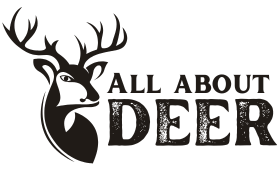Thorold’s Deer, a rare and elusive member of the deer family, inhabits the remote forests and mountainous regions of East Asia. These elegant creatures are known for their striking appearance and intriguing behaviors.
Table of Contents
Species Data
[wptb id=5723]- Class: Mammalia
- Order: Artiodactyla
- Family: Cervidae
- Scientific Name: Cervus albirostris
- Life Span: 10 to 15 years
- Height: 100-110 cm (39-43 inches)
- Weight: 400-500 pounds (180-225 kilograms)
Description
Thorold’s Deer, also known as the White-lipped Deer, is a medium-sized deer species with distinctive features. They are characterized by their large, white lips, which set them apart from other deer species. These deer have a reddish-brown coat with a dark dorsal stripe and a bushy tail.
Appearance
Males (bucks) are known for their impressive antlers, which can grow up to 90 cm in length. Their coat provides excellent camouflage in their forested habitat, making them difficult to spot.
Behavior
These deer are primarily crepuscular, meaning they are most active during dawn and dusk. They are known for their agility and ability to navigate rugged terrain with ease.
Habitat
Thorold’s Deer inhabit dense forests, mountains, and alpine meadows in regions of East Asia, including China, India, and Nepal. They are adapted to cold climates and can withstand harsh winters.
Diet and Nutrition
Their diet consists of a variety of vegetation, including grasses, leaves, and shrubs. They are also known to browse on mosses and lichens in their mountainous habitats.
Mating Habits
Thorold’s Deer typically mate in the fall, with a gestation period of about 230 days. Female deer, known as does, give birth to one or two fawns, which they nurture and protect in their forested homes.
Mating Behavior
- Reproduction Season: Fall
- Pregnancy Duration: Approximately 230 days
- Baby Carrying: Does protect and nurse their fawns
- Independent Age: Fawns become independent at around 6 months
- Female Name: Doe
- Male Name: Buck
- Baby Name: Fawn
5 Fun Facts for Kids
- Thorold’s Deer are named after the white lips that distinguish them from other deer species.
- They are skilled jumpers and can leap over obstacles with grace.
- These deer are highly elusive and prefer to stay hidden in dense forests.
- Their antlers are shed annually and regrow.
- Thorold’s Deer are an important species in their ecosystem, playing a role in seed dispersal and forest health.

